Located in the center of Hien street, the historical site of Hien Hung Yen pagoda has become an outstanding spiritual tourist destination attracting thousands of visitors every year to visit and worship.
About Hien Hung Yen Pagoda
Hien Hung Yen Pagoda (Thien Ung Tu) is an ancient temple located on Pho Hien Street, Hong Chau Ward, Hung Yen Town. The temple was located in a busy area for a while. It is known that Hien Pagoda is a place built to worship Buddha and Quan Am Nam Hai with the meaning of admonishing people to live in a good direction, accumulate good, accumulate virtue. Many merchant ships come here to pray for smooth sailing. According to the word of mouth of many tourists, when coming here to ask for peace, luck, family members are healthy, business is also more successful.
 Hien Pagoda is located in the famous Pho Hien relic complex
Hien Pagoda is located in the famous Pho Hien relic complex
Hien Hung Yen Pagoda has the architectural style of the Late Le Dynasty with the overall structure of: Front Street, Nghi Mon, Later Duong, two rows of Huu Vu, Ta Vu, the Mother House, and the Ancestral House. With a unique and sacred architecture, Hien Pagoda today is famous as a peaceful place that attracts many tourists from all over the world to visit and worship when coming back to Pho Hien . If you are looking for a quiet, peaceful space to find peace in your heart, don’t hesitate to visit Hien Pagoda. Surely you will let go of all the fatigue and worries that have existed in your mind for a long time.
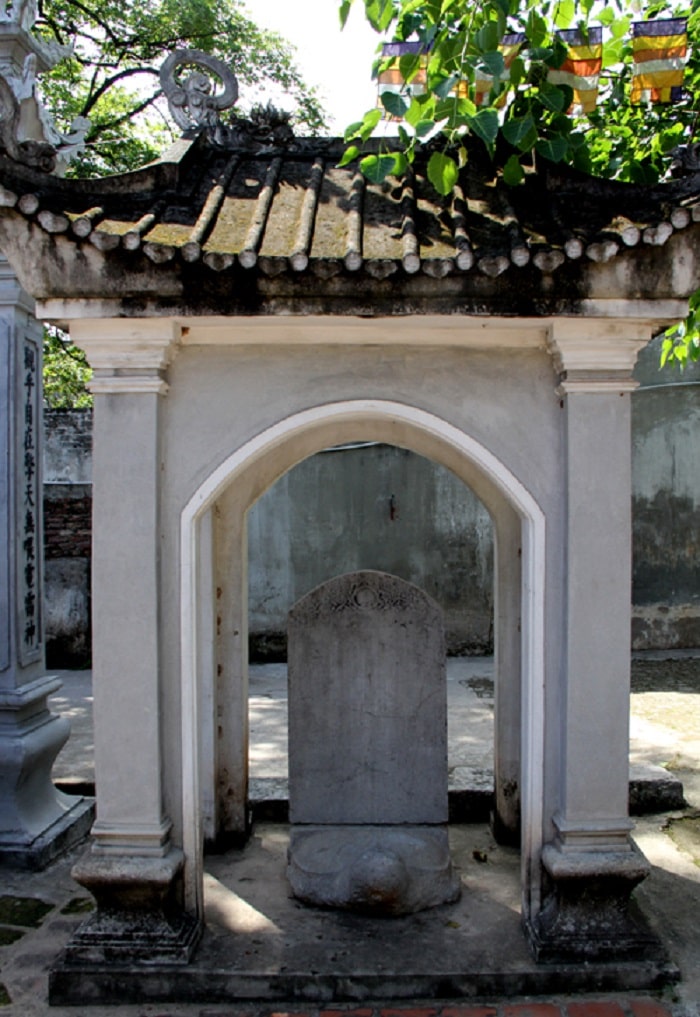 The temple has bold architecture of the Later Le period
The temple has bold architecture of the Later Le period
Right next to Hien pagoda there is a Hien communal house (also known as Hoa Duong communal house). This place worships the emperor of Mau Duong village, an eunuch with the surname Du of the Song dynasty. He was the one who served the Song Dynasty for a long time, had merit in re-creating and worshiping Queen Duong Quy Phi, and was instrumental in guiding the people in mulberry cultivation, farming, handicraft trade, fishing, etc. .. Currently, his remains are buried behind the communal house.
Every year on March 10 at Hien Hung Yen pagoda , a traditional festival takes place attracting local people and tourists from far away to participate.
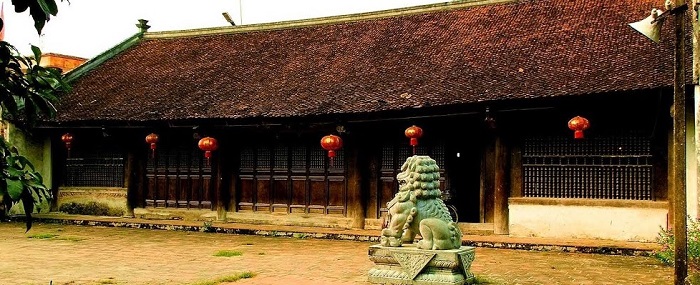 Dinh Hien is located right next to Hien pagoda
Dinh Hien is located right next to Hien pagoda
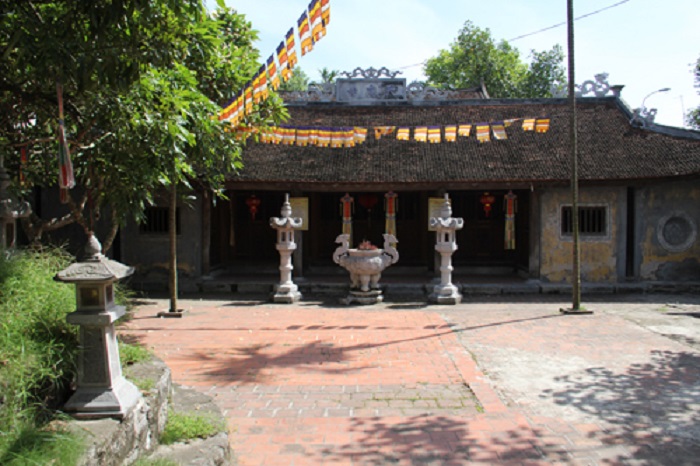 Front yard of Hien Hung Yen pagoda
Front yard of Hien Hung Yen pagoda
History of the formation of Hien Hung Yen pagoda
Legend has it that Hien Pagoda was built during the Tran Dynasty, King Tran Thai Tong (1232 – 1250) built by the mandarin To Hien Thanh. In 1625 and 1709 the pagoda was restored. Experiencing ups and downs and remodeling, in 1992, Hien Pagoda was classified as a National Historical and Cultural Relic. In 2012, the pagoda was registered with another record as the temple with the first longan tree in Vietnam.
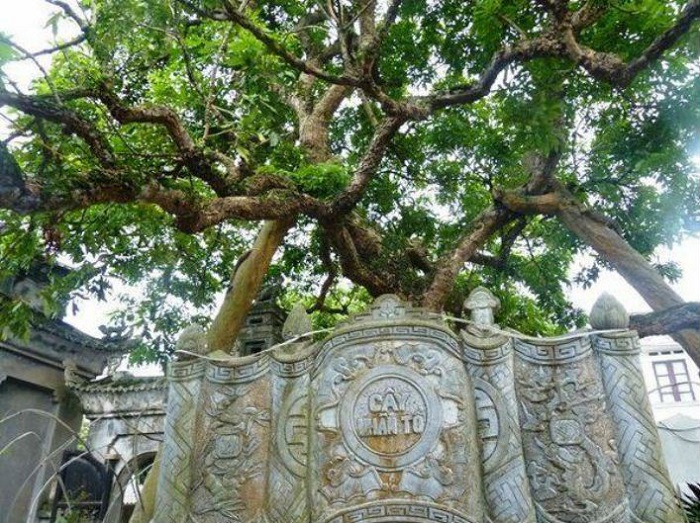 The longan tree is a typical symbol of the temple
The longan tree is a typical symbol of the temple
How to go to Hien pagoda?
Hien Hung Yen Pagoda is about 60km from Hanoi capital. To go here, you can choose the means of transport such as motorbikes, cars, buses. If you ride a motorbike, first depart from Hanoi, go along the 5th street to Pho Noi, continue to turn to bus 39A, you will arrive at Hung Yen city. Moving to the inner city, you will come to Pho Hien. Here you ask people the way to Hien pagoda. The road to here is quite flat, not zigzag and rarely encounter traffic jams. So you will move here quite easily and quickly.
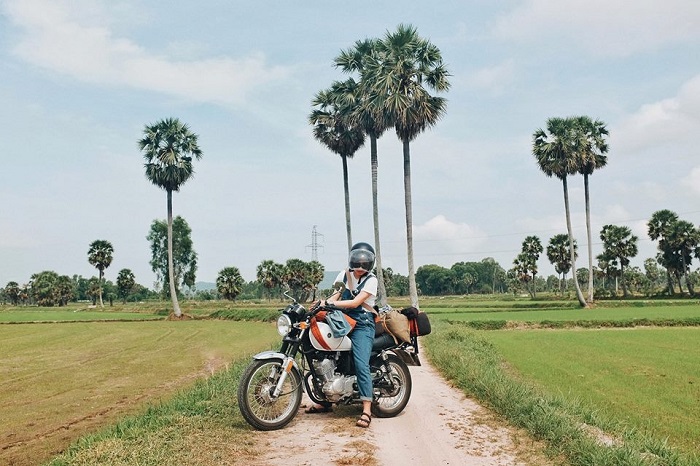 You can ride a motorbike to Hien Hung Yen pagoda
You can ride a motorbike to Hien Hung Yen pagoda
Architecture at Hien Hung Yen pagoda
The architecture of Hien Hung Yen pagoda was built according to the “foreign internal and external” layout, including the front hall, upper hall, Thien Huong and three corridors. In the middle of the upper hall, there is a sitting statue of Quan Am Nam Hai. The statue has eight pairs of hands arranged in opposite directions, on the head there is a hat that touches lotus, chrysanthemum, and ephemeral. In the front, there is a statue of four Bodhisattvas sitting on a lotus with a dignified and kind face. All the statues are from the 19th century. The fact that the upper hall placed an altar with a prominent statue of Quan Am and four Bodhisattvas, showed the mentality of worshiping the gods to save sentient beings from suffering in rivers and seas. This is also the difference in the worship layout of Hien Hung Yen pagoda compared to other temples.
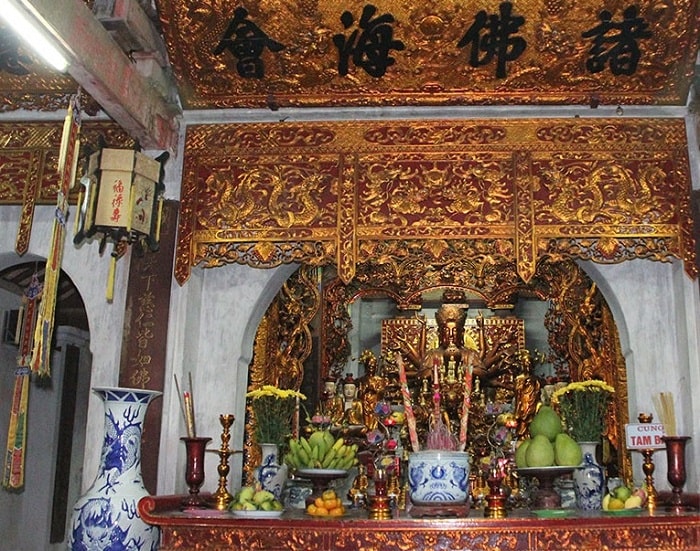 Inside the shrine of Hien pagoda
Inside the shrine of Hien pagoda
Tam Quan of the pagoda is built with two floors and eight roofs. The front hall has 3 compartments according to a fairly simple truss architecture. The cremation hall also has 3 compartments, but the design is arched, influenced by the Western medieval art style, with the look of a Christian church. The three upper chambers of the palace were built in the architectural style of a gong rack stacked with two rows of columns. The center of the upper hall was built in the style of a stack of matches. At the temple, the part with the most national identity is the roofs of the lower and upper parts. Most of them are curved in the shape of a stylized phoenix or a new dragon.
 The architecture at the temple is quite simple
The architecture at the temple is quite simple
At Hien Hung Yen Pagoda , there are still two extremely precious stone steles storing documents about the history and process of residence of Hien Street in the past. The first stele is named “Thien Ung Tu – Tan Tu restore Ky Thach Bi” built in 1625, the 7th Vinh To date. The stele has recorded “Pho Hien is the place where the small town of Trang An is located in the four directions”. This is an important basis for historians to affirm the birth of Hien Street.The second stele is “Thien Ung Tu – Bi Ky Duc Duc Huy Hy” built in the 5th year of Vinh Thinh (ie 1709). The stele identified that Hien Street had 10 wards at that time.
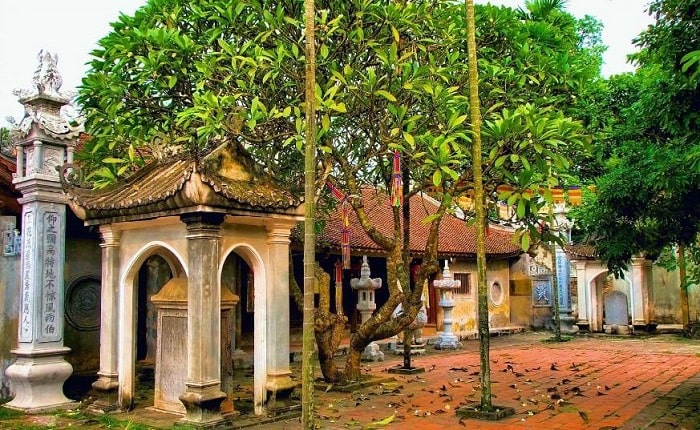 Precious stone stele at the temple
Precious stone stele at the temple
Referring to Hien pagoda , it is impossible to forget to mention the longan tree , also known as the Tien longan tree. Up to now, this longan tree is more than 300 years old. This is a longan tree with a very beautiful shape, large fruit, thick pulp, silk code, delicious fruit flavor. In the past, each ripe longan season would be carefully plucked to offer to the Buddha, to the gods, and to the local mandarins, who also used it to advance the king. The trunk of the longan tree is now old, swollen inside, and only one branch remains. This branch has been poured in by the temple and local people to plant and take care of. The present longan tree is the symbol of the longan land. Every year the tree produces delicious fruit clusters.
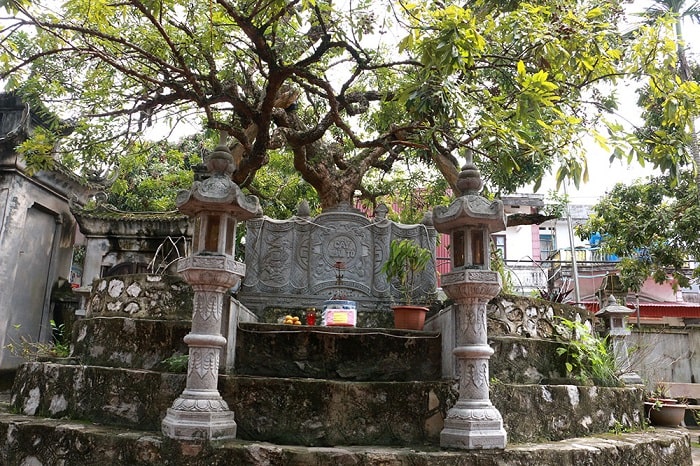 The longan tree is more than 300 years old
The longan tree is more than 300 years old
If you have the opportunity to travel to Hung Yen , you should not miss a trip to visit and sightsee at Hien Hung Yen pagoda. At this time, you will find yourself a peace, dispel the worries and fatigue of life. In addition, the pure space at the temple will contribute to cleansing the mind, healing wounds, helping people stay away from the delusions of life.
Source: Collected internet.